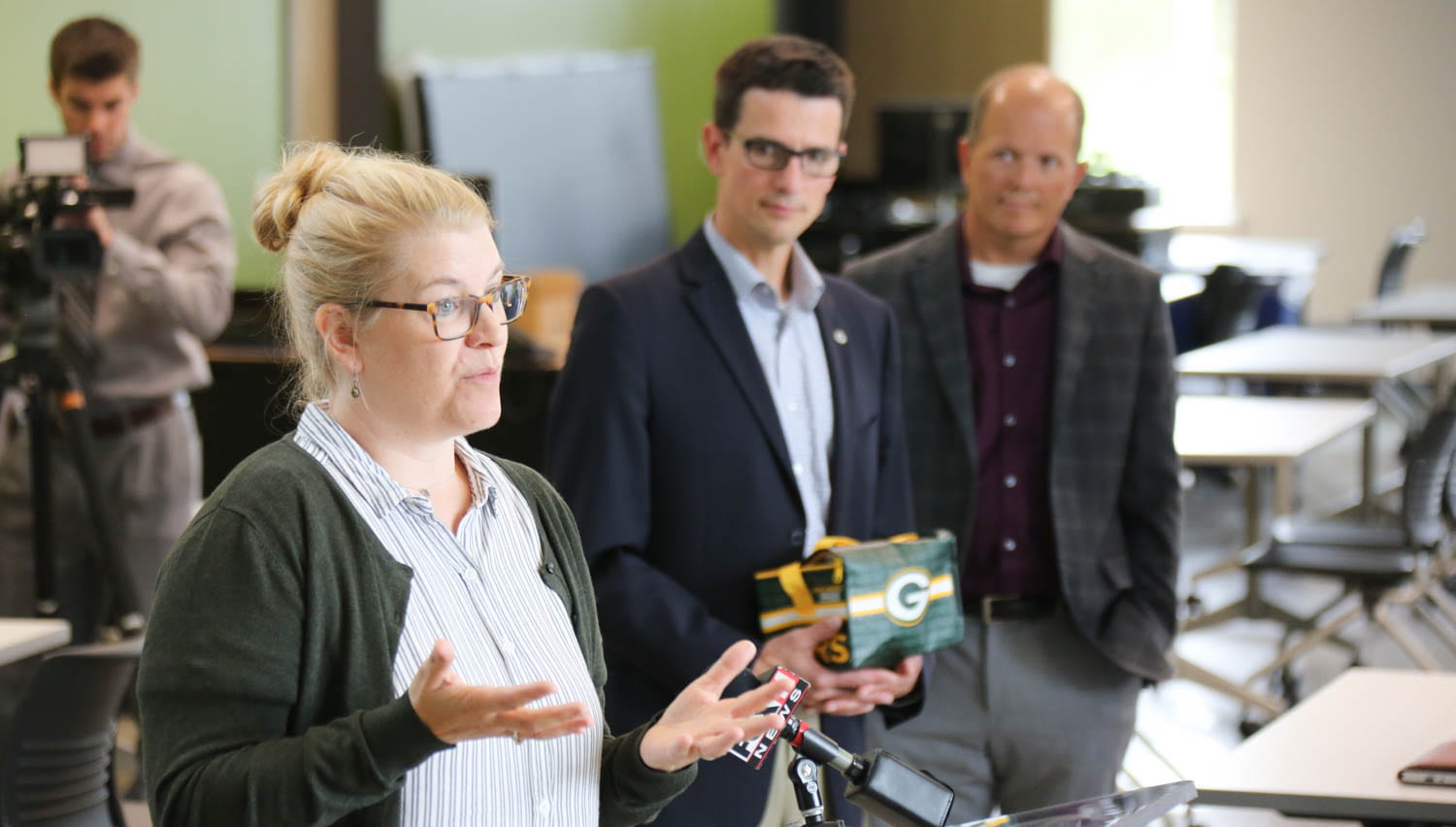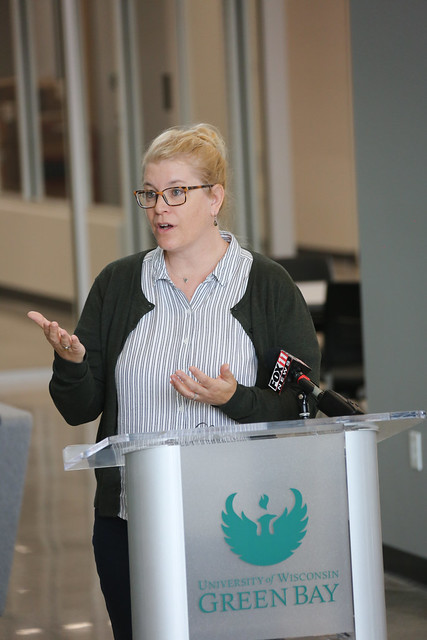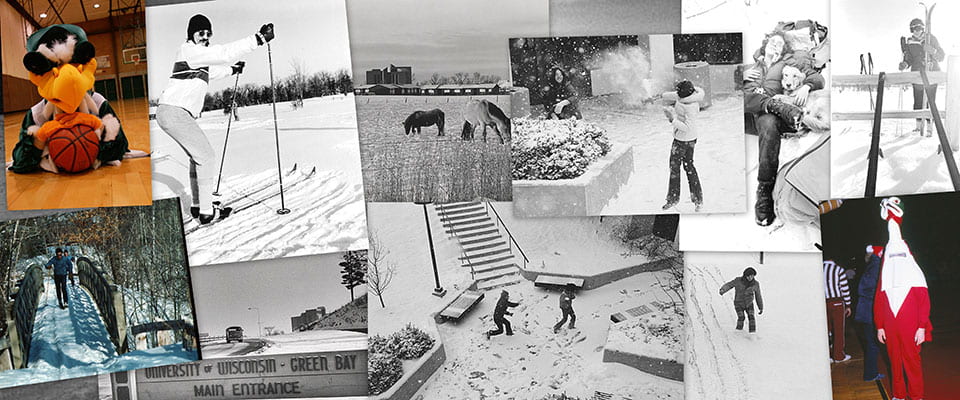Photos: Tiny Earth kicks-off with soil from the Green Bay Packers

The next big win emerging from the Green Bay Packers’ practice fields could be life-saving bacteria. Student and faculty researchers from UW-Green Bay and area high schools will examine a soil sample from the Packers’ Clark Hinkle Field as part of the Tiny Earth project, which aims to identify bacteria in the earth strong enough to beat diseases that have become resistant to antibiotics.
According to UW-Green Bay Biology Professor Brian Merkel, about 70 percent of the antibiotics used today come from soil bacteria. But the discovery of new ones have drastically slowed. And a 2013 analysis from the Centers for Disease Control and Prevention showed that at least two-million people contract an antibiotic-resistant infection each year.
After analyzing soil samples, including the one from the Packers’ Ray Nitschke, students and faculty will gather at the The Tiny Earth Symposium, held at the Lambeau Field Atrium, Dec. 6, 2019, to showcase their findings. At the same time, 10,000 students from across the globe are doing similar research, hoping for the next big discovery.
Merkel calls this a “student-sourcing” event. The larger the group of students, the more reasonable it is to expect a greater frequency of discoveries, he said. The kick-off event took place on Monday, Sept. 9, 2019 at Brown County’s STEM Innovation Center on the UW-Green Bay campus, with representation from UW-Green Bay, the Green Bay Packers and Tiny Earth.
Click to advance slideshow or view the album on Flickr.
– Photos by Dan Moore, Office of Marketing and University Communication




